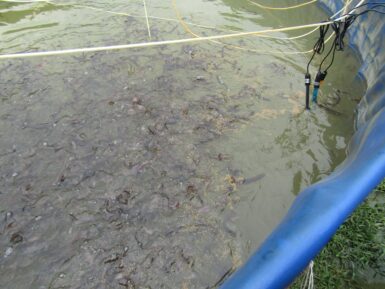
Grove - Temp & Humi & Barometer Sensor (BME280)
Grove - Barometer Sensor (BME280) is a breakout board for Bosch BMP280 high-precision, low-power combined humidity, pressure, and temperature sensor.
Overview
This module can be used to measure temperature, atmospheric pressure and humidity accurately and fast. As the atmospheric pressure changes with altitude, it can also measure approximate altitude of a place. It can be connected to a microcontroller with I2C (integrated with Grove socket) or through the SPI bus. There is also provided highly abstracted library to make the product easier to use.
The BME280 is an upgraded version of BMP180, and BME280 gets dramatic improvements from BMP180. BME280 comes with a smaller footprint, lower power consumption, lower noise measurements, higher resolutions for pressure and temperature, lower RMS noise, newly added SPI bus, more measuring modes, higher measuring rate, and newly added filter against environmental interference. Since the atmosphere pressure reading is affected by altitude and temperature, we have added compensation features.
Hence, Grove - Barometer Sensor (BME280) will be more reliable in providing precise temperature, atmospheric pressure values, humidity and approximate altitude data.
Features:
- Get more precise temperature, atmospheric pressure values, humidity and approximate altitude data fast.
- Grove compatible for ease to use
- Highly abstracted library for building projects quicke
Tech specs
|
Parameter |
Value |
|
Input voltage |
3.3V or 5V |
|
I/O voltage |
3.3V or 5V |
|
Operating current |
0.4mA |
|
Operating temperature |
-40 - 85 ℃ |
|
Atmospheric pressure sensor measurement range |
300 - 1100 hPa (1 hPa= one hundred Pa) with ±1.0 hPa accuracy |
|
Temperature sensor measurement range |
-40 - 85 ℃, with ±1.0°C accuracy |
|
Humidity sensor measurements range |
0% - 100% relative humidity , with ±3% accuracy |
|
Measurement modes |
Piezo & Temperature, forced or periodic |
|
Chip |
BME280(datasheet) |
|
Interface Bus |
SPI, I2C (use either one of them) |
|
Weight |
3.2 g (for breakout board), 9.3 g for whole package each piece |
|
Dimensions |
40 (length) × 20 (width) mm |
Note:
The altitude is calculated by a combination of temperature and atmospheric pressure. There is no specialized components for altitude measurement.
Get Inspired
How to realize a servo and water sensor function using simple raw materials.

With the Earth’s population still on track to increase by another two billion people by the year 2050, finding ways to feed them without causing grave harm to the environment is a top priority. Currently, fish is one of the most widely consumed foods in the world, and a new technology called biofloc helps provide both a food source and environmental stabilizer to fishponds without the need for dangerous chemicals/processes. As part of element14’s Just Encase Design Challenge, Md. Khairul Taifur had the idea to create a device that could sit within a pond and report detailed telemetry for environmental markers, as well as correct minor water quality issues via the use of a heater and water pump. His system is based around a MKR WAN 1300, which is responsible for collecting data from each sensor and then sending it to the cloud with its onboard LoRaWAN module. To make the system independent from an external power source, Taifur included a small 5V solar panel, power management board, and rechargeable battery pack. Once his firmware had been finalized, everything was carefully placed inside of a waterproof electrical box and sealed to only expose the sensors. This biofloc monitoring system has great potential as a proof-of-concept of how future fish farms might operate in a more sustainable manner. You can read more about the project here on element14.








